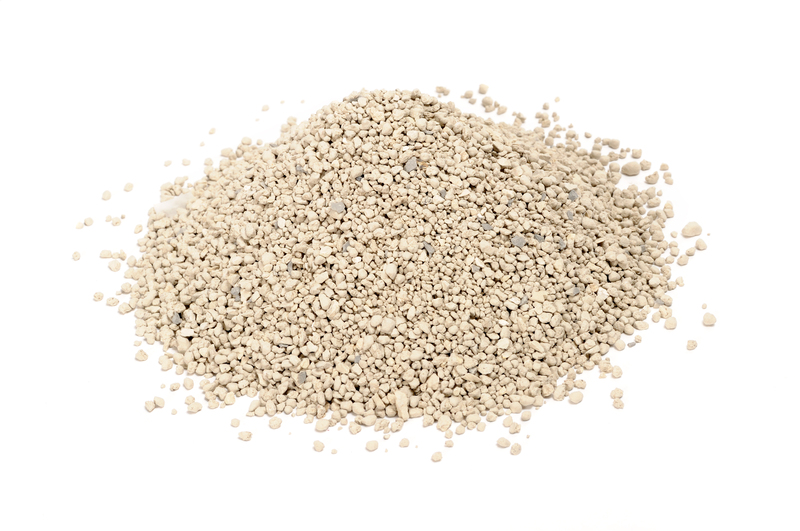Master the Art of Cleaning uPVC Window Frames
Posted on 28/09/2025
Master the Art of Cleaning uPVC Window Frames: The Ultimate Guide
uPVC window frames are a leading choice for modern homes due to their durability, energy efficiency, and low-maintenance qualities. But, even the best materials require upkeep to ensure longevity and continued curb appeal. If you want to keep your windows sparkling year-round, learning how to properly clean and care for your uPVC frames is essential. This comprehensive guide provides step-by-step solutions, effective tips, and expert tricks to help you master the art of cleaning uPVC window frames.

Why is It Important to Clean uPVC Window Frames?
uPVC (unplasticized polyvinyl chloride) is beloved for its weather-resistant and low-maintenance features, but exposure to harsh conditions can cause dirt, grime, and stains to accumulate over time. Without regular cleaning, uPVC window frames can become discolored, impacting both their function and aesthetics. Let's examine the main reasons why regular cleaning is crucial:
- Prevents staining and discoloration: Dust, pollution, and rainwater can leave behind unsightly marks if not regularly removed.
- Avoids long-term damage: Accumulated grime or moss can erode the protective surface and even shorten the lifespan of your frames.
- Enhances curb appeal: Clean, bright uPVC frames look attractive from both inside and outside.
- Supports proper function: A build-up around opening mechanisms can prevent windows from closing or sealing fully.
- Maintains property value: Well-maintained windows improve the perception and value of your home.
How Often Should You Clean Your uPVC Window Frames?
While uPVC window frames are known for being lower maintenance than traditional wood or metal, it's best to schedule a deep cleaning at least every three to six months. In areas with heavy pollution, lots of foliage, or coastal conditions, more frequent cleaning may be required. Regular light cleaning between thorough washes can stop the buildup of stubborn stains and grime.
Tools & Supplies Needed for uPVC Frame Cleaning
You don't need any specialized equipment for a sparkling-clean result. Before starting, make sure you have the following:
- Soft, non-abrasive cloths or sponges
- Microfiber cloth for polishing
- Bucket of lukewarm water
- Soft-bristle brush or old toothbrush
- Mild dish soap or uPVC-specific cleaner
- Spray bottle
- Vacuum cleaner (for frames and tracks)
- White vinegar or baking soda (for tough stains)
Tip: Steer clear of rough materials such as steel wool, abrasive pads, or harsh chemical cleaners, as these can damage or dull the surface of your uPVC window frames.
Step-by-Step Guide to Cleaning uPVC Window Frames
1. Remove Loose Dirt and Dust
Start by removing any surface dust and debris. Use a vacuum cleaner with a nozzle attachment to clean inside the frame, focusing on the corners, sills, and sliding tracks. This prevents grime from turning into mud when you add water.
2. Prepare a Gentle Cleaning Solution
Mix a few drops of mild dish soap with lukewarm water in a bucket or spray bottle. Alternatively, you can use a store-bought uPVC cleaner designed specifically for these frames.
3. Clean the Frames
- Dip a soft microfiber cloth or sponge into the solution and wring out excess water.
- Gently wipe the uPVC window frames from top to bottom, paying special attention to the edges and crevices.
- Use a soft-bristle brush or old toothbrush to lift out dirt from corners, hinges, and sliding mechanisms.
4. Tackle Stubborn Stains
- For minor marks: Mix equal parts white vinegar and water, then dab the solution onto the stain with a soft cloth. Leave for a few minutes and wipe clean.
- For tough stains or yellowing: Make a paste from baking soda and water, apply with a cloth, and gently rub the affected area. Rinse thoroughly.
- Note: Always test spot any cleaning solution on a hidden part before applying it widely to avoid discoloration.
5. Rinse Thoroughly
Using a clean, damp cloth or sponge, wipe down the frames to remove any remaining cleaning solution. This prevents any residue buildup that could attract more dirt or leave streaks.
6. Dry and Polish
Finish by buffing the frames with a dry microfiber cloth. This will restore gloss and leave your uPVC window frames looking brand new.
Special Considerations: Avoiding Common Cleaning Mistakes
Avoid Abrasive Tools and Harsh Chemicals
**Never use scouring pads, bleach, ammonia, acetone, or solvent-based cleaners**. These can damage the finish, cause scratching, or permanently discolor your uPVC window frames.
Don't Use High-Pressure Washers
Pressure washing may seem time-saving, but it can force water into the joints and seals, risking internal damage and potential leaks. Stick with manual cleaning for the best and safest results.
Avoid Wax or Polish Products Not Made for uPVC
Standard furniture polish or waxes can leave sticky residues or even damage the protective UV layer of your uPVC. Choose products that are specifically labeled as safe for uPVC materials.
How to Restore Discolored or Faded uPVC Window Frames
Over time, uPVC frames can become slightly yellowed or dull due to UV exposure, weather, and pollution. While regular cleaning minimizes discoloration, sometimes extra steps are needed to restore the original white brilliance.
Expert methods to revive faded uPVC window frames:
- Use a specialized uPVC restorer: These commercial products contain gentle cleaning agents and surfactants to deep clean, brighten, and protect your window frames.
- Try a gentle whitening paste: Baking soda-based pastes or non-abrasive whitening creams can lift minor yellowing, but always spot-test first.
- Protect with a uPVC polish: After cleaning, apply a uPVC-safe polish for a glossy finish that also adds a slight protective barrier against further discoloration.
Warning: Avoid repainting uPVC unless you are using products and techniques certified for uPVC surfaces, as regular paints may crack or peel.
Dealing with Mold, Mildew, and Algae on uPVC Frames
In damp or shaded areas, mold and green algae can occasionally develop on uPVC window frames. Address this promptly to avoid staining and maintain healthful indoor air.
- Mix a solution of one part white vinegar to four parts water in a spray bottle.
- Spray onto affected areas and let sit for 10-15 minutes.
- Clean with a soft brush or cloth, then rinse thoroughly with clean water.
- Repeat as needed for stubborn mold or algae.
Do not use bleach, as it can damage uPVC and is not necessary for small amounts of mold.
Cleaning Inside the Window Tracks and Hinges
Don't neglect the operational components of your uPVC windows! Dust, dirt, and debris can accumulate in tracks and hinges, affecting smooth operation and leading to potential wear.
- Vacuum or brush out loose debris from all tracks and crevices.
- Wipe with a damp, soapy cloth to remove grime.
- Dry thoroughly to prevent rust on any metal components.
- Lubricate hinges and sliders with a silicone spray to keep them moving freely.
Regular attention to these areas avoids performance issues and extends the overall life of your window system.
Preventative Maintenance for uPVC Window Frames
Beyond regular cleaning, there are several preventative measures that can help keep your uPVC frames pristine:
- Trim back nearby trees or shrubbery to prevent sap, pollen, or dirt from sticking to frames.
- Wipe up bird droppings or tree resin as soon as possible to avoid chemical staining.
- Check window seals and weather-stripping every six months.
- Ensure drainage holes in the frames are not blocked, allowing trapped moisture to escape.
Professional vs. DIY: When to Call in Experts
Most householders can safely and effectively clean their own uPVC window frames following these steps. However, consider professional help in the following cases:
- Persistent stains that do not lift with standard methods.
- Large-scale buildup of mold, algae, or lichen.
- Windows in upper stories that are inaccessible without specialized ladders or equipment.
- Deep restoration for very old or heavily weathered uPVC frames.
UPVC window cleaning companies use commercial-grade products and safe cleaning techniques, ensuring the best possible result while you stay safely on the ground.

Frequently Asked Questions About Cleaning uPVC Window Frames
Can you use vinegar to clean uPVC window frames?
Yes! Diluted white vinegar is a safe, effective choice for removing dirt and light stains from uPVC frames. However, avoid prolonged exposure on colored uPVC and always rinse thoroughly afterwards.
How do you remove black mold from uPVC window frames?
Mix a solution of white vinegar and water, spray onto the affected area, and wipe with a soft cloth or brush. Avoid using bleach or abrasive cleaners.
Are commercial uPVC cleaners worth it?
For challenging stains and professional-level results, commercial uPVC cleaning products can be highly effective. They are specially formulated to clean and protect without harming the frame.
What should you avoid using on uPVC window frames?
Stay away from abrasive pads, steel wool, solvent-based cleaners, acetone, bleach, and strong ammonia products. These can cause damage, scratching, and discoloration.
Can yellowed uPVC frames be restored?
Mild yellowing may be improved with specialist uPVC cleaning or restoring products. Severe discoloration can sometimes be minimized, but prevention with regular care is always best.
Conclusion: Keeping Your uPVC Window Frames At Their Best
Mastering the art of cleaning uPVC window frames is a straightforward yet vital task for any homeowner. With regular attention, gentle cleaning products, and a few insider tips, you can keep your window frames gleaming for decades. Not only will well-cared-for frames enhance your home's appearance, they will protect its value and functionality.
**Remember:** Clean uPVC windows are more than just a pretty face--they reflect your attention to detail, love of your home, and commitment to maintaining it for the years to come!
Bookmark this guide for future reference, and enjoy the sparkle of freshly cleaned uPVC window frames all year round!





